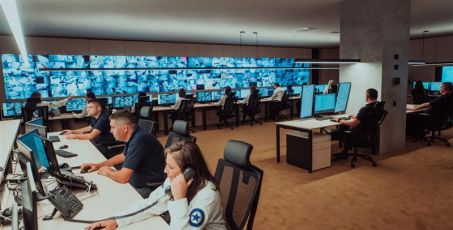From Overload to Insight: How Control Rooms can lead in a complex operational landscape
25/11/25, 9:00 am
The evolving operational reality
Across Australia’s policing and emergency services, the control room remains the critical hub that holds operational response together. It is the place where uncertainty becomes clarity, where risk is identified early and where split-second decisions directly influence community safety.
But the environment around today’s control rooms is more complex than ever. Society produces more data, more reporting pathways and more digital signals than any operator can reasonably process unaided. Public expectations continue to rise, technology evolves rapidly and the range of systems control rooms must navigate grows every year.
Meanwhile, staffing levels often remain static, turnover stays high and new generations of operators expect intuitive, modern tools. Leaders now face a strategic challenge: how do we ensure our control rooms not only keep pace with this complexity, but thrive within it?
A Control Room under pressure
The modern control room manages a demanding lifecycle, starting the moment a contact is received through voice, online channels, partner agencies or emerging digital pathways. Operators must quickly capture data, assess risk, access multiple systems, consult frameworks and coordinate appropriate responses.
They must also stay updated, support frontline officers with accurate information and maintain detailed records for operational and legislative purposes. Every step adds cognitive demand. When multiplied across tens of thousands of incidents in a high-tempo environment, the system risks becoming overloaded.
Control rooms don’t suffer from a lack of data. They suffer from too much of it.
Streamlining information for a clearer operational picture
Control rooms don’t need more data, they need data that makes sense. The next generation of capability depends on systems that reduce cognitive load, surface what matters fastest and remove friction from decision-making.
Imagine a control room receiving multiple reports about a vehicle moving erratically across different suburbs.
A caller provides a partial plate. ANPR flags a similar vehicle. An online report comes in from a community member. A patrol shares live video from their device.
With traditional systems, these signals arrive in separate platforms. Operators must jump between screens, compare details manually and try to understand risk under extreme time pressure.
Modern platforms bring these signals together. Visual tools map related calls and highlight emerging clusters. Integrated communication channels reduce the need to switch between systems.
Live language detection and translation support diverse communities without delay. When information flows cleanly and intuitively, operators make faster, more accurate decisions. Supervisors gain earlier visibility of demand and can re-prioritise resources in real time.
A unified operational picture also strengthens ethical and consistent decision-making. By drawing from voice calls, online reports, live video, ANPR, sensors and partner agencies, control rooms can assess risk with greater accuracy. Frontline officers receive clearer, more complete information, improving safety and operational outcomes.
AI-Enabled Support without replacing Human Judgement
New innovations in dispatch and incident management are already reshaping control room operations. Intelligent engines can continuously monitor unresourced incidents, generate deployment recommendations and update classifications in real time.
Combined with voice-to-text transcription, automatic incident-type detection and AI-driven risk assessments, these tools enhance accuracy and reduce noise. Crucially, they do not replace human judgement, they elevate it. Operators remain in control, supported by technology that highlights risk, maintains situational awareness and lightens administrative load.
For frontline officers, this means safer responses and more informed decisions at the scene.
Extending capability beyond the Control Room
The next phase of operational innovation will increasingly support the frontline. AI-powered assistance can guide officers through infrequent or complex tasks and reduce administrative burden. Improved usability and smarter workflows will decrease data extraction rates and strengthen the quality of information flowing back into the control room.
When both control room and frontline share connected, intelligent tools, they operate as a unified ecosystem, each amplifying the effectiveness of the other.
What matters most for leaders
The mission of policing and emergency services hasn’t changed: protect life, ensure community safety and support officers under pressure. What has changed is the environment around them.
Leaders don’t need more technology for its own sake. They need technology that simplifies complexity, strengthens situational awareness and supports confident, defensible decisions. Organisations that invest in clearer operational pictures and intuitive, connected systems will be the ones that lead the next decade of public safety, ensuring that no critical detail is ever lost in the noise.




